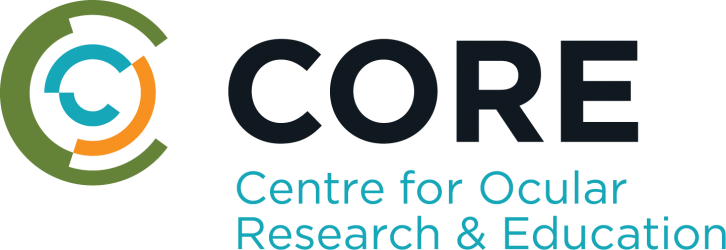Publications
Showing 25 results out of 496 in total.
Walsh K. Canadian Dry Eye Summit: Questioning the questionnaires https://contactlensupdate.com/2019/12/11/canadian-dry-eye-summit-questioning-the-questionnaires/ 2019;December.
Walsh K. Artificial tears: preserved or non-preserved, that is the question New Zealand Optics 2020, September: 26-27
Walsh K. A Year in Review: A Global Perspective on the Most Extraordinary of Years in Clinical Practice https://contactlensupdate.com/2020/12/09/a-year-in-review-a-global-perspective-on-the-most-extraordinary-of-years-in-clinical-practice/ 2020;December.
Walsh K. COVID-19 and contact lens wear: what do eye care practitioners and patients need to know? https://contactlensupdate.com/2020/03/16/covid-19-and-contact-lens-wear-what-do-eye-care-practitioners-and-patients-need-to-know/ 2020;March.
Walsh K. Face coverings and mask to minimise droplet dispersion and aerosolisation: a video case study https://contactlensupdate.com/2020/12/09/face-coverings-and-mask-to-minimise-droplet-dispersion-and-aerosolisation-a-video-case-study/ 2020
Walsh K. BCLA CLEAR Summary https://contactlensupdate-com.s3.amazonaws.com/uploads/2021/06/BCLA-CLEAR-summary.pdf 2021;60 [ Show Abstract ]
The BCLA Contact Lens Evidence-based Academic Report (CLEAR) totals more than 300 pages across 11 papers. Coordinated by 10 committee chairs, written by 102 authors based in 16 countries, it was published in March 2021 and is available here.
BCLA CLEAR sets the standard to which eye care professionals (ECPs) can refer for the latest information in the contact lens field whilst also highlighting opportunities for future research. This summary draws on key points from the reports to help inform evidence-based practice.
Walsh K, Dantam J, Luensmann D. Contact Lens Wear and Its Disruption of the Tear Film Review of Cornea & Contact Lens 2019;May/June: 38-42.
Walsh K, Jones L. Covid-19 and contact lenses: Keeping it simple in the ‘new normal’ Optician 2021, March: 25-30 [ Show Abstract ]
Karen Walsh and Professor Lyndon Jones examine how Covid-19 has affected routine contact lens practice and what that means for both eye care practitioners and their patients (C77595, one distance learning CET point suitable for optometrists, contact lens opticians and dispensing opticians).
In the first quarter of 2020, routine clinical eye care underwent a temporary cessation in most regions around the world due to the coronavirus pandemic. Optometric practice is now predominantly back up and running, albeit with the occasional return to a higher alert level as the infection rates in countries ebb and flow over time. The demands
of working in a world with Covid-19 have necessitated changes to how routine practice is conducted. As a result, the attitudes and needs of eye care practitioners (ECPs) and patients related to eye care in general, and contact lenses (CLs) in particular, may have altered. Within this new shape of optometric practice, the question of where CL practice fits naturally arises. While aftercare for the routine assessment and resupply of existing wearers may seem acceptable, how does the profession approach the option of new fits and upgrades? Given the wider challenges faced by practitioners, is this really the time to focus on such areas? Is it even ‘safe’ to fit CL now, given the close contact required? However, looking at it from a different point of view, are there in fact opportunities arising from the changes dictated by Covid-19 that could be beneficial for CL practice? This article reviews the recommendations
for safe CL practice, looks at their relevance for both practitioners and patients, and addresses how CL can be accommodated into the daily clinic routine as easily as possible.
Walsh K, Jones L. Ein Jahr Covid-19 und die Auswirkungen auf die Kontaktlinsenpraxis (German translation of "COVID-19: A Year in Review and the Impact on Contact Lens Practice", as published in CL Spectrum in Feb 2021); Deutsche Optikerzeitung 2021, 06: 96-103 [ Show Abstract ]
Das Jahr 2020, in dem die Corona-Pandemie begann, hat die gesamte Weltgemeinschaft und damit das Leben jedes einzelnen Menschen verändert. Folglich sind die Auswirkungen der Pandemie auch in der augenoptischen Branche zu spüren. Die Autoren Karen Walsh, MCOptom und PGDip, und Lyndon Jones, DSc und FCOptom, ziehen Bilanz.
Walsh K, Jones L. COVID-19: A year in review and the impact on CL practice Contact Lens Spectrum 2021;36, February: E1-E6 [ Show Abstract ]
For everyone involved in eye care, 2020 was going to be a special year. The numerous “20/20” puns and articles circulating in January were full of hope and future-gazing. No one could have predicted the direction that the year would take and its resulting impact on the world at large and, for this audience specifically, on the delivery of routine contact lens care. As the end of this unprecedented year has finally come to pass, it feels right to pause and reflect on the last 12 months, to examine the journey that the profession has taken, and to summarize the situation. This article reviews what the profession has learned and asks whether enough is known to successfully navigate the months and years ahead. With no small amount of irony and a large nod to those aforementioned puns, does being approximately one year into the pandemic result in having a useful amount of “20/20 hindsight”?
Walsh K, Jones L, Woods J, Moody K. Evidence-based contact lens recommendation Contact Lens Spectrum 2019, Nov: 21-26
Walsh K, Lenz Y, Behrens R. Get the support you need: Freely available information can complement basic contact lens practice Contact Lens Spectrum 2019;34, 9: 32-37
Walsh K, Srinivasan S, Jones L. Lid margin health: the forgotten part of contact lens discomfort? Optician 2018, 7 September: 28-32
Walsh K, Sulley A. Soft toric lens fitting practices not meeting patient needs Optometry Times Journal 2021;13, 2: 34-37 [ Show Abstract ]
The inclusion of astigmatic correction in spectacles is common practice. Outside of the need to reduce a high or previously uncorrected astigmatism to ease adaption, eyecare professionals (ECPs) routinely prescribe the full toric correction in spectacles. Historically, the lack of availability of consistently performing, comfortable soft toric contact lens designs resulted in different prescribing practices for astigmats compared to those wearing spectacles, with spherical lenses often recommended over toric lenses for low to moderate levels of astigmatism.
Modern soft toric designs are significantly different from early non-planned replacement versions of 20 or more years ago. Their overall performance—which includes ease of fitting, comfort, rotational stability, vision performance, and consistent manufacturing in a range of designs and materials—enables them to be fit successfully to a wide range of astigmatic patients.
This review provides an overview of current soft toric prescribing, comparing and contrasting different fitting practices around the globe, and explores patient expectations and the opportunities that exist to meet their needs.
Walsh K., Jones L. Aligning clinical practice with professional beliefs Optometry Today 2019, Dec: 71-75
Williams-Lyn D, MacNeill K, Fonn D. The effect of rigid lens back optic zone radius and diameter changes on comfort Int Contact Lens Clin 1993;20, 11/12: 223-229
Wolffsohn J, Craig J, Jones L. An Action Plan for Managing Dry Eye Review of Optometry 2024, May 15: 50-55
Wong S. A review of contact angle techniques ContactLensUpdate.com 2017
Wong S. CLEAR report summary: Evidence-Based Contact Lens Practice https://contactlensupdate.com/2021/06/15/evidence-based-contact-lens-practice/ 2021;60
Wong S. Fast Forward to the Future: Shades Ahead Contact Lens Spectrum 2024;39, October: 17
Wong S. Clinical Insight: TFOS DEWS III - Diagnostic Methodology Summary https://contactlensupdate.com/2025/12/12/dews-iii-downloadable-summaries/ 2025;87
Wong S, Meyler J,. Truth or myth: Monovision is best for presbyopic CL correction? Optician; https://www.opticianonline.net/content/features/truth-or-myth-monovision-is-best-for-presbyopic-cl-correction 2023, August 1:
Wong S, Ruston D. Truth or myth: Spectacle lenses provide better visual acuity than soft toric contact lenses Optician: https://www.opticianonline.net/content/features/truth-or-myth-spectacle-lenses-provide-better-visual-acuity-than-soft-toric-contact-lenses/ 2024, January 5:
Wong,K.Y.. Fast Forward to the Future: Aptamer-Functionalized Contact Lenses Contact Lens Spectrum 2025;40, July/August:
Woods C. Presbyopia: a pause in focus ContactLensUpdate.com 2012





